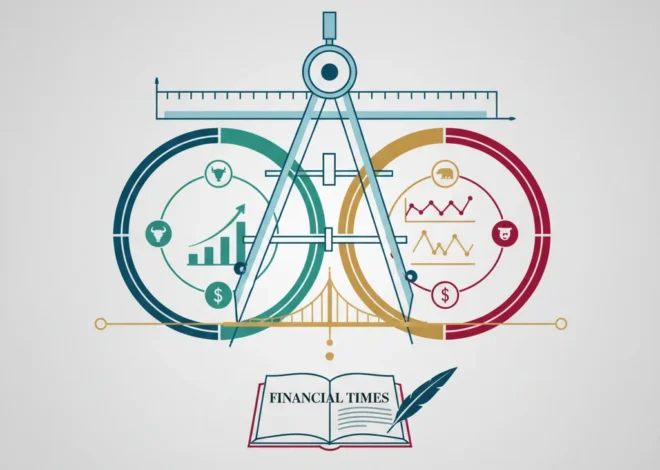
Diwali Fireworks or Fiscal Gamble? Unpacking India’s High-Stakes Festive Stimulus
The Festival of Lights Meets a Bold Economic Strategy
Diwali, India’s grandest festival, is a time of radiant lights, joyous celebration, and, crucially for the economy, peak consumer spending. It’s a period when families purchase new clothes, upgrade household appliances, and invest in big-ticket items like cars and homes. Recognizing the immense economic power of this cultural phenomenon, the Indian government, led by Prime Minister Narendra Modi, unveiled a strategic “gift” for its citizens: a significant overhaul of the Goods and Services Tax (GST). This move, timed perfectly with the festive season, was more than just a gesture of goodwill; it was a calculated bet to reignite a slowing economy and counteract the dampening effects of global trade tensions and weakening domestic sentiment.
In this analysis, we will delve deep into this major fiscal policy decision. We’ll explore the economic climate that prompted it, deconstruct the specifics of the GST cuts, and evaluate the potential ripple effects across the Indian stock market, key industries, and the broader world of finance. Is this a masterstroke of economic policy designed to spark sustainable growth, or a short-term gamble with long-term fiscal consequences?
An Economy in Need of a Spark
To understand the “why” behind the GST overhaul, one must first appreciate the challenging economic landscape India was navigating. Despite strong foundational growth in previous years, the nation was facing a confluence of headwinds. Externally, escalating trade wars between major global powers were creating uncertainty and impacting export-oriented sectors. Internally, a more significant concern was the palpable decline in consumer sentiment. This wasn’t just a feeling; it was reflected in hard data, particularly from the automotive sector, which had seen a dramatic slump in sales, signaling that consumers were deferring large purchases (source).
This slowdown was compounded by issues within the banking and non-banking financial company (NBFC) sectors, which had tightened credit availability. With credit becoming harder to access and consumer confidence waning, the engine of India’s consumption-driven economy was beginning to sputter. The government faced a critical choice: wait for the cycle to turn or intervene decisively. They chose the latter, using their most potent tool of indirect taxation to directly influence consumer behavior.
Deconstructing the Diwali Gift: A Closer Look at the GST Cuts
The Goods and Services Tax (GST), introduced in 2017, was India’s most ambitious tax reform, unifying a complex web of state and central taxes into a single structure. While lauded for its long-term vision, its implementation had its share of complexities. The festive overhaul aimed to simplify this structure further and, more importantly, make a wide range of goods and services cheaper for the end consumer.
The GST Council announced a raft of rate cuts across various sectors critical to festive spending. The goal was clear: reduce the final price for consumers, thereby stimulating demand and encouraging them to open their wallets. Below is a look at some of the key sectors that benefited from these changes.
| Sector/Item Category | Previous GST Rate (Approx.) | Revised GST Rate | Intended Economic Impact |
|---|---|---|---|
| Hotel Stays (Mid-to-High End) | 18% – 28% | 12% – 18% | Boost domestic and international tourism by making accommodation more affordable. |
| Automotive Parts & Accessories | 28% | 18% | Lower the cost of vehicle maintenance and potentially support the struggling auto industry. |
| Household Appliances (e.g., grinders, small TVs) | 28% | 18% | Spur sales of consumer durables, a key indicator of middle-class consumption. |
| Outdoor Catering Services | 18% | 5% | Encourage dining out and social spending, benefiting the hospitality sector. |
These adjustments were not merely administrative; they were a direct fiscal stimulus package delivered through the tax system. By lowering the tax burden, the government effectively put more purchasing power back into the hands of the people, hoping the multiplier effect would invigorate supply chains, boost manufacturing, and ultimately improve economic growth figures.
The Market Reaction: Opportunities and Risks for Investors
For those involved in investing and trading, such a significant policy shift creates both opportunities and risks. The immediate impact on the Indian stock market was predictably sectoral. Companies in the consumer discretionary, automotive, hospitality, and FMCG (Fast-Moving Consumer Goods) sectors were expected to be the primary beneficiaries.
An investor’s playbook following this announcement would involve:
- Focusing on Consumer Stocks: Companies dealing in electronics, apparel, and automobiles would likely see a direct uptick in sales volumes. Their quarterly earnings reports would become a key barometer of the policy’s success.
- Watching the Banking Sector: A revival in consumer spending, particularly on big-ticket items, would lead to an increase in demand for retail loans. This could provide a much-needed boost to the credit growth of both public and private sector banks.
- Analyzing Supply Chain Players: The benefits would not be limited to front-end retailers. A surge in demand for cars, for instance, would positively impact auto ancillary and component manufacturers. This creates deeper, second-order investing opportunities.
However, the risks cannot be ignored. If the stimulus fails to generate the expected growth, the focus will shift back to the government’s strained finances. A widening fiscal deficit could lead to higher government borrowing, potentially crowding out private investment and putting upward pressure on interest rates. International rating agencies would also be watching closely, and any downgrade in India’s sovereign rating could trigger foreign capital outflows, adding volatility to the markets.
Fintech’s Role and the Global Context
It’s important to place India’s move within the broader global economic context. At the time, central banks worldwide were grappling with slowing growth, with many resorting to monetary policy tools like interest rate cuts. India’s approach, focusing on fiscal stimulus through tax cuts, offered a different path. It was a direct intervention in the real economy rather than just the financial system.
The implementation and impact of such measures are also amplified by India’s rapidly evolving financial technology (fintech) ecosystem. The GST Network (GSTN) itself is a mammoth piece of fintech infrastructure, digitizing a significant portion of the country’s economic activity. This digital backbone allows the government to track the impact of its policies with near real-time data. Furthermore, the proliferation of digital payment platforms means that a consumption-led recovery can be faster and more efficient than ever before. While not directly related, future tax reforms could even explore technologies like blockchain to enhance transparency and prevent tax evasion, making the entire system more robust.
The Verdict: A Calculated Risk for a Brighter Economic Future
Ultimately, the Modi government’s Diwali tax cut was a bold and calculated risk. It was a direct attempt to steer the narrative away from economic gloom and inject a potent dose of optimism into the market, just when it was needed most. The strategy was rooted in a deep understanding of the Indian consumer psyche and the cultural importance of festive spending, as noted by observers who saw it as an attempt to “light up consumer spending” during the festive season.
For business leaders, investors, and finance professionals, the takeaway is multifaceted. The move underscored the government’s willingness to take proactive, if unorthodox, measures to support growth. It highlighted lucrative opportunities in consumption-oriented sectors while also serving as a reminder of the underlying fiscal risks. The success of this festive stimulus would not be measured in the fireworks of one Diwali season, but in the sustained economic glow in the quarters that followed. It remains a fascinating case study in the art of blending cultural sentiment with hard-nosed economics to navigate the complexities of a modern emerging market.


